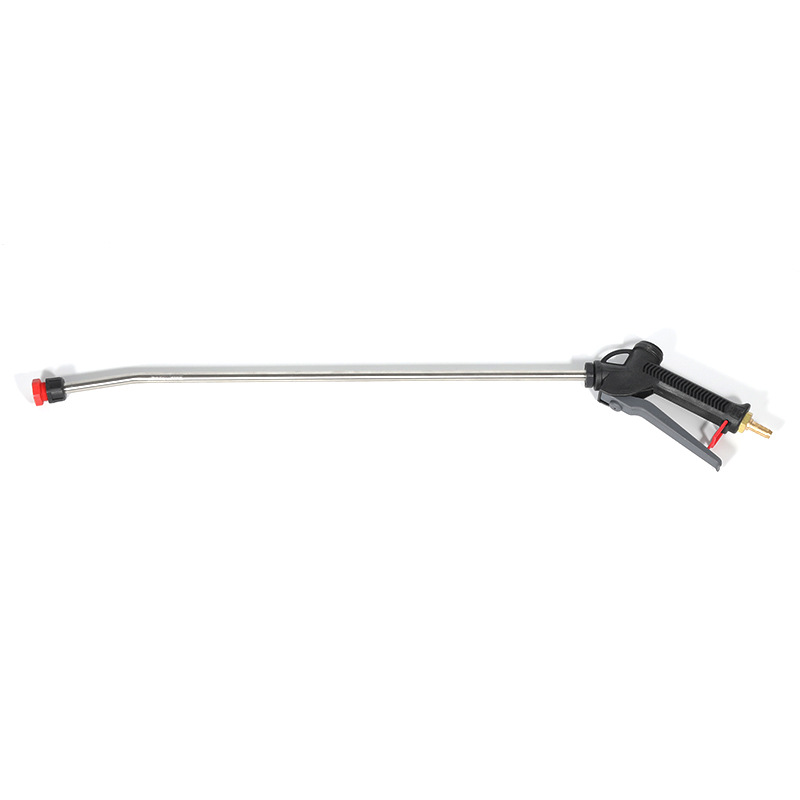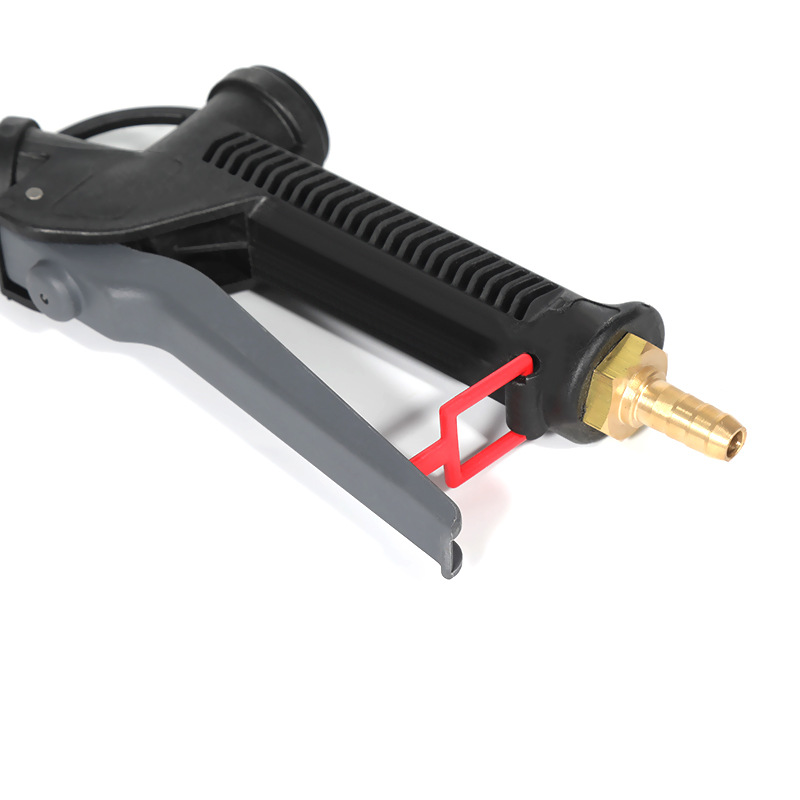High Pressure Large Mouth White Foamer
Cat:Pressure Washer Foam Pot
The large diameter design is one of the outstanding features of the High-pressure large-mouth white foamer. This design allows this product to spray a...
See Details2025-07-24
Correctly understand the working principle of high-pressure cleaners
High-pressure cleaners use high-pressure pumps to pressurize water and then spray high-speed water through nozzles to remove dirt and impurities. Due to the high pressure of the sprayed water, it can quickly flush the surface, but it is also dangerous. Before use, you should fully understand the working mode and pressure parameters of the equipment, master the appropriate distance between the nozzle and the surface, and avoid damage due to improper operation. In addition, you should be familiar with the various functions of the equipment, such as pressure regulating valves, water temperature control, and safety valves, to ensure that they can be adjusted to the appropriate state when cleaning different objects.
Safety inspection before operation
Before using a high-pressure cleaner, you must conduct a comprehensive inspection of the equipment to ensure that it is in good condition. Check whether the high-pressure pipes and joints are aging or damaged, confirm that the power cord is not damaged, the grounding device is intact and effective, and check whether the nozzle is blocked or loose. For cleaners with fuel or hot water heating functions, it is also necessary to confirm whether the fuel storage is safe and whether the heating system is normal. Through these inspections, the risk of accidents caused by equipment failure can be reduced.
Importance of personal protective measures
When using a high-pressure cleaner, you should wear appropriate protective equipment, including waterproof and non-slip gloves, protective glasses, puncture-resistant shoes, and protective clothing to prevent injuries caused by high-pressure water or splashes. For tasks that require long-term operation, you can wear noise-proof earmuffs to reduce the impact of noise on hearing. When using hot water or steam cleaners, you should pay more attention to scalding protection to ensure that the skin does not come into direct contact with high-temperature water or steam.

Correct operating posture and method
When operating a high-pressure cleaner, you should maintain a stable standing posture and hold the spray gun tightly with both hands to avoid loss of control caused by one-handed operation. During the spraying process, the nozzle should be kept at an appropriate distance from the cleaning surface to avoid damage caused by being too close or affecting the cleaning effect by being too far away. When using, you should spray at low pressure first, and then gradually increase the pressure after confirming that the equipment is operating normally. At the same time, the spray direction should avoid people and animals to avoid high-pressure water directly impacting fragile or sensitive objects.
Precautions for electrical safety
For electric high-pressure cleaners, you should confirm that the power socket is waterproof and reliably grounded before operation, and avoid contact between the power cord and plug with water during use. When operating in a humid environment, it is recommended to use a leakage protection device to prevent electric shock. When the equipment is not in use, the power supply should be turned off in time and the cable should be put away to prevent accidents caused by cable dragging or tripping.
Safety precautions for fuel and hot water type cleaners
For fuel-driven or heating high-pressure cleaners, check whether the fuel storage and pipelines are leaking before use, and ensure that the fuel container is away from fire sources and high-temperature areas. The operating procedures should be followed when igniting and heating, and avoid using in closed spaces to prevent the accumulation of harmful gases. For high-temperature water flow or steam, confirm whether the nozzle and pipeline are stable before spraying to prevent bursting or scalding due to excessive temperature.

Protection of the environment during cleaning
High-pressure cleaners will produce large water flow impact and splashing during operation, which may affect the surrounding environment. Before operation, the work area should be cleaned, items that are easily damaged by water should be removed, and peripheral equipment should be covered with protective cloth. When working outdoors, pay attention to whether the drainage is unobstructed to prevent sewage from flowing into areas that should not be polluted. When cleaning chemical residues or oil stains, it is recommended to use appropriate recovery or filtration devices to reduce the impact on the environment.
Common safety hazards and preventive measures
Common safety hazards when using high-pressure cleaners include spray injuries, electric shock, equipment explosions, and falls. To prevent these problems, the equipment should be maintained regularly to keep all parts in good condition; the operation route should be arranged reasonably to avoid operating in slippery areas; and high concentration should be maintained during operation to avoid fatigue. For multi-person collaborative operations, the division of labor should be clear to ensure smooth communication.
Safety precautions when using high-pressure cleaners
| Category | Safety Measure Description |
|---|---|
| Equipment Check | Inspect hoses, nozzles, power cords, and connections before use |
| Personal Protection | Wear waterproof gloves, safety goggles, non-slip shoes, and protective clothing |
| Operating Method | Maintain proper distance, use both hands on the spray gun, start at low pressure |
| Electrical Safety | Ensure grounding, avoid water contact with power sources, use RCD protection |
| Heat & Fuel Safety | Check fuel storage, prevent leaks, and avoid enclosed use for heated models |
| Environmental Safety | Clear the work area, protect nearby items, and ensure proper drainage |
Equipment maintenance and storage after use
After using the high-pressure cleaner, the remaining water should be drained in time, and the nozzle and filter should be cleaned to prevent clogging by residual impurities. For fuel-powered equipment, the remaining fuel should be checked and the fuel supply valve should be closed to avoid fuel leakage. For electric equipment, the power plug and cable should be wiped dry and stored in a dry and ventilated place. Through reasonable maintenance and storage, the service life of the equipment can be extended and its performance can be kept stable.